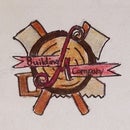Introduction: Balsa Wood Glider
It's summer! So time to get outside with your friends and family to fly your very own balsa glider!
This project is great to help your kids learn basic crafting skills involving cutting, sanding, and drilling; and will be a great addition to your summer fun!
This glider works best indoors, but can also be used outdoor, with or without a launcher.
psst... if you liked this instructable, please consider voting me up in the contests I entered, Thanks!
This is actually the same glider my team built for the Tech Challenge 2016. It was originally inspired by this video (not mine!) -- but the design and technique is changed after we tried different ways on three different gliders and figured out the best way to make them.
Step 1: Some Quick Plans and Steps
Follow along with the shortened version of the steps ^ (above)
And the plans - plans are for plane that turns to the right - if you don't want it to turn, simply make sure both sides of the wing are 15 inches, not 14 and 16 like in the plans. ^ (also above)
The instructions below are just more detailed explanations.
Step 2: Materials
You will need:
- 1/16 x 4 x 36 in Balsa Slice (because it is light enough to fly)
- 2 of the 3/32 x 3 x 36 inch Balsa Slices (both are commonly found sizes in hobby shops/ craft stores)
- 25 x 1/4 x 3/8 in - Redwood (it is light and durable)
- Sandpaper: 60, 80, and 100 grit
- At least a foot of aluminum wire (aluminum wire is best since it is lighter, but using paper clips instead is okay too)
- ~3 inches of steel wire (or 1 paper clip)
- A knife/ razor blade
- A pencil
- A ruler
- Strong Glue: CA Wood Glue, Super Glue, or any other long-lasting glues
- School Glue (just the simple white kind)
- A few inches of scrap plywood
- A drill, preferably a drill press, and a 1/16 bit
- Ping-pong balls or other weights (coins, washers)
- Durable rubber bands
- Time (a lot of it! :D)
Step 3: Wings - Gluing
For both pieces of balsa, cut off 5 inches of width. (they are now 3/32 x 3 x 31" and 1/16 x 4 x 31")
Take 3/32 x 3 x 31" (bigger) balsa and put it on top of the 1/16 x 4 x 31" (smaller) balsa so that they are parallel to each other, and aligned at the top so that the gap between the bottom of the 3/32 piece and the 1/16 piece is 1 and 1/2 inches long.
In that position, glue the 3/32 x 3 x 36" balsa onto the 1/16 x 4 x 36" balsa using super glue on the edges and corners and school glue everywhere else. (Of course, it you don't care about conserving your super glue, you can use it for the whole length of the wing.)
Step 4: Wings - Shaping
After letting that dry,
Cut the wing profile to shape using the razor blade. Refer to the plans given for sizes.
Step 5: Wings - Airfoil
An airfoil is a cross-section of a plane/glider's wing.
Airfoils are very important in helping glider fly. Because of Bernoulli's principle, air flowing around a well made airfoil generates lift. (see image)
To make your airfoil, begin by removing wood from the lower part of the top balsa piece -- the place where the two balsa pieces intersect. Use a razor blade to cut of strips of wood. You want to make create a gradual slope from the high to low instead of the harsh "step" in thickness. (refer to the red part on the diagram)
(Remember to be careful when using a razor blade! Always keep the blade sharp and point away from your body whenever you can.)
Then use the razor blade to cut away wood from the leading edge of your wing. (refer to the red part on the diagram)
Smooth out the shape by sanding with increasing grits. Start with 60 go to 80 and finish with 100.
The last step is to wet the trailing edge with water. and gently use your fingers to curve it down a little (if you have a good piece of B-grain balsa, it should curve down naturally.)
Step 6: Wing - Dihedral
Having a V-shaped or dihedral profile to the wing gives it stability in flight.
First decide if you want your glider to turn/curve while flying or fly straight.
To make it curve, mark the vertex of the dihedral angle is anywhere but the middle. (you have a-lot of freedom with changing the flight pattern of your glider in this step--choose where you angle wisely!)
To make it fly straight, find the center of gravity of the wing by balancing it on a ruler until it doesn't tip (make sure you are precise!) Mark this place. This will be the vertex of your dihedral angle.
Use a razor blade to score a line in the place you marked, this line has to be perpendicular to the length of the wing. (1) Work a making the groove deeper and deeper until it just barely doesn't cut through the wing. Score another 6 inch line perpendicular to the the first, parallel to the wing, and closer to the leading edge. (2). Wetting line #1, gently fold it up. Apply lots of super glue to the line. Refer to the picture to set up your wing for drying. Prop up the ends of the wings on something that is around 2 inches high.
Step 7: Adding Aluminum Wire
After the wings have dried, bend some aluminium wire and super glue into the second grove you cut. This will strengthen the wing.
Also super glue ~4 inches of flattened aluminium wire to the training edge. This will protect against cracks from the stress of the rubber band.
Step 8: Winglets
To add winglets, cut a 2 quarter circle shapes with a radius that is the same as the width of the tip of the wing (should be 1 and 3/4 inch) out of the second slice of thinner balsa.
Take a scrap piece of balsa or another (preferably rectangular) piece of scarp to support the winglets. Glue on both wiglets with their supports using super glue. (see picture)
Let it dry. Your wing is now complete!
Step 9: Adding the Mount
Follow the instructions on the picture to add this mount to the wings. This will make sure it is easy to connect it to the body using rubber bands later.
You will need two pieces of 1 inch by 2 inch balsa that you can cut out from the cut-off in step 4.
(sorry for the crack -- the glider I was taking a picture of has been heavily used)
Step 10: Starting the Body
For the body, take the two pieces of red wood, and use the 1/16 bit to drill holes every 3/4 of an inch down the length of both pieces. Make sure both pieces are the same. It is easier if you first mark out where you are drilling with a pencil or centerpunch.
Note: This glider was designed with the Tech Challenge (challenge to transport ping-pong balls) in mind, so the only purpose of the double hulled body is to hold ping-pong balls and be strong. That being said, it works without ping-pong balls bust you will still have to use a weigh to weigh down the nose of the glider.
~~~~
By the way, you can mount this wing design on different (lighter)
bodies for better flight outside! (this body is honestly not very great for just fun flying since it was originally designed for a specific contest) I would recommend just mounting it on a balsa stick if you are going to be using it for outside fun. (but read till the end so you know how to make the tail etc.)
Step 11: Connecting
Connect the two sides with 1 1/4" x 1 1/2" scrap basswood, sandwiching the redwood on the top and bottom
You will need three of these sandwiches. (see image notes) One of them in the front (or could use a dowel) and the other two in the middle. Leave the back open so you can bend it to attach to the tail.
Step 12: Tail
Step 13: Attaching the Tail
Attach the tail by curving the two body pieces inward and attach to the bottom of the fin as shown.
Step 14: Attaching the Wings
Fold out 2 paperclips and cut them to be ~3-inches of length.
We will be attaching the wings using rubber bands hooked over these paperclips that will be threaded through the holes. (see image)
But first you need to figure our where to put the wings.
Keep in mind that the center off gravity on any glider should be 1/3 from the leading edge of the wing, meaning that you will have to add and remove weight accordingly to achieve this. Start by adding weight (ping-pong balls, wood, washers... etc) to the front of the body until the center of gravity (test using ruler method) is approximately in the front one-third of the body. Mark the center of gravity.
Thread the paper clips 2 through the holes you drilled, a little bit more than 2 inches in front of and behind the center of gravity you marked. (see image notes)
Step 15: Attaching Wings (cont.)
Hook the rubber bands onto the paperclips and stretch over to hook onto the second paperclip to form an X pattern. (see image)
Check the center of gravity with the wings attached. Is it 1/3 from the leading edge of the wing?
If not, add or remove weight from the nose. When you've achieved the 1/3 rule, glue and fasten all the weights down permanently and tidy up the plane
Step 16: You're Finished!
You've finished the glider, now you can go outside and hand toss it but make sure their is little to no wind.
If you have access to a big room, such as school gym, try it out there too. Remember to lightly toss it forward and slightly angled up. Do not chuck it as hard as you can, because chances are it will break. Remember, balsa is fragile!
You can also make a really good rubber band launcher for this glider, but that'll have to wait till next post. Stay tuned and enjoy! :)
~~~
How it flies without a launcher:

Second Prize in the
Make It Fly Contest 2016

Participated in the
Outside Contest 2016

Participated in the
DIY Summer Camp Challenge













